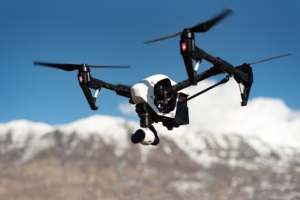5 Ways Non-Military Drones Help People Globally
 In the modern world, the term “drone” has developed two very different connotations. Media coverage about drones is either about the use of unmanned aerial vehicles in war zones or about the recreational use of drones for photography or entertainment. But what about drones being used for serious purposes, excluding military combat. Around the globe, people are using non-military drones for humanitarian purposes and to support global development. Here are five ways that non-military drones are saving lives across the globe:
In the modern world, the term “drone” has developed two very different connotations. Media coverage about drones is either about the use of unmanned aerial vehicles in war zones or about the recreational use of drones for photography or entertainment. But what about drones being used for serious purposes, excluding military combat. Around the globe, people are using non-military drones for humanitarian purposes and to support global development. Here are five ways that non-military drones are saving lives across the globe:
5 Ways Non-Military Drones Help People Globally
- Transporting Medicine and Medical Equipment
Often faster than helicopters and other traditional methods, drones are ideal for carrying blood, vaccines and small pieces of medical equipment. The South African National Blood Service (SANBS) plans to begin using drones to deliver blood to rural areas for blood transfusions, and Ghana is already doing so. In 2018, Vanuatu was the first country to use a drone to transport vaccines to rural areas. Norway has begun using drones to quickly bring defibrillators to the scene of emergencies. In medicine, time is of the essence, and quick delivery can save lives. - Assessing Disaster Areas
Drones are a relatively fast and inexpensive way to obtain images of natural disasters so that emergency responders are aware of the situation and well-equipped to act accordingly. In 2012, the International Organization for Migration (IOM) used drones to assess the aftermath of Hurricane Sandy in Haiti. According to the IOM, when they used drones “The complete analysis specifying which houses had been destroyed and damaged was available four days after the flooding event, on November 1. In comparison, satellite imagery requested at the same time from the United Nations Institute for Training and Research (UNITAR) Operational Satellite Applications Programme (UNOSAT) was not available until one week after the drone analysis.” In addition, to the advantage of their speed, drone images are clearer than satellite images and drones are able to fly below the cloud cover, enabling them to capture images that a satellite might miss due to cloud obstruction. - Fighting Wildfires
Fighting fires is a dangerous job, and every year firefighters die in the line of duty. In recent years, California has used drones to assist firefighters from the sky. Fighting fire aerially is not a new concept, but in the past planes and helicopters have been manned by a crew, which is also a dangerous job. NBC News reports that between 2006 and 2016, 24 percent of wildland firefighter deaths were due to plane and helicopter crashes. Unmanned aircraft are safer for firefighters, can operate for long stretches of time, and are not limited by conditions as much as helicopters and planes are. - Tracking Mosquitoes That Spread Disease
Mosquitos are a frequent carrier of malaria in Peru. In a 2019 study published in the journal PLOS Neglected Tropical Diseases, drones in Amazonian Peru were able to identify bodies of water containing mosquito larvae. With this knowledge, scientists can intervene in these sites to control the mosquito population in an effort to curb malaria transmission. - Bringing Internet Access To Remote Areas
In 2016, Facebook launched a project to use drones to provide internet access to people living in remote areas. The Aquila drone, powered by solar energy, would fly at 60,000 feet and help people in isolated regions connect with others around the globe. The Aquila project was shut down in 2018 as Facebook shifted to other projects, but the idea of drones being used to connect people in remote areas to the internet remains a compelling one. Airbus is reportedly working on a similar project, the Zephyr S, which includes the capabilities of providing internet access.
While unmanned aircraft are relatively new technology, it is already clear that non-military drones are making a difference around the globe. As such technology continues to advance, more talk of these innovative uses of drones should be expected.
– Meredith Charney
Photo: Flickr
